2006 Egypt
13 January 2007, Saturday; Kenya Air
This morning, our last in Cairo, we took
the Metro two stops to the Egyptian Museum. Armed with our guide book and
determined to see at least the few things it recommended most highly.
We loved the Narmer Palette – a
double-sided carving on grey stone dating from 3100BC. It depicts Narmer, who
first united Lower and Upper Egypt, wearing the crown of Lower Egypt on one
side and the crown of Upper Egypt on t’other. And shows the pharaoh smiting his
enemies, followed into battle by his sandal-bearer! This is the beginning of
Pharaonic Egypt (though ancient Egypt’s distinctive artistic styles were
obviously already well-established by this time)!
Downstairs we admired: a seated statue of
Zoser – he of the Step Pyramid – with his striped headcloth over his wig and
his thin moustache; a statue of Khafre – he of Giza’s second pyramid – with the
wings of the falcon god, Horus, wrapped about his head; the double statue of
the royal couple Rahotep and Nofret, son and daughter-in-law of Sneferu – he of
the Bent Pyramid – the paint on these still well-preserved; Seneb the dwarf
with his family – used in Egyptian family-planning campaigns; a panel called
the Meidum Geese dating from 2600BC, its colours still vivid and its images so
beautifully rendered that modern ornithologists can easily recognise the
various species depicted; a pink granite statue of the imperious Hatshepsut
wearing a pharaoh’s headdress and false beard; the unfinished head of beautiful
Nefertiti, wife of the heretic Akhenaten – he of “one god” fame – and possible
ruler before Tutankhamun succeeded to his place on the throne.
And upstairs we marvelled at: the wooden
armies and scenes of rowing boats, ploughing, etc; and the amazing and
elaborate jewellery of ancient Egypt. But mainly we were wowed by some of the
5,000 items removed from Tutankhamun’s tomb. His lion throne covered with sheet
gold and inlaid with glass and semiprecious stones with a tableau of his
beloved wife applying perfume to her husband’s body under the rays of the sun; the
myriad golden statues (shabti) placed in the tomb – symbolic servants required
to perform menial tasks in the afterlife; the four gigantic gilded wooden
shrines which were erected one after another around the coffins of the dead
young pharaoh; the two gold sarcophagi (the third outer coffin lies in situ in
the Valley of the Kings) – the smallest cast in solid gold and weighing 110kg;
and the famous 11kg solid gold death mask that covered the head of the mummy.
One could spend days here – and even then
one would need to be selective. I am glad we left this until last as we had by
then a much clearer idea of what we wanted to see and why.
Aside: There are dogs and cats everywhere.
Also posters of Mubarak. And most Egyptians seem inordinately proud of their
country and their hospitality.
[Join us in Burma...]
[See current and previous trips here...]
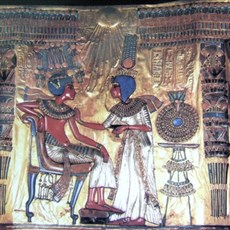
Egyptian Museum
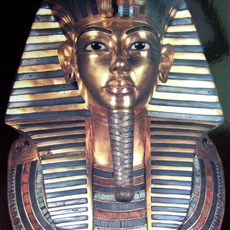
Egyptian Museum
From the Museum by taxi to the City of the Dead and the Qaitbey Mosque in Islamic Cairo. Completed in 1474 and “widely agreed to mark the pinnacle of Islamic building in Cairo”. The interior of this still-used mosque is quiet and attractive with a stunning domed ceiling and carpeted floor soft under bare feet. Alongside is the tomb chamber of Qaitbey and his two sisters – containing supposedly a stone imprinted with the footprint of Mohammed (peace be upon him – PBUH) the Prophet. Mmmm… We were encouraged to touch this, so doubted it very much. We climbed the minaret for great views of the carvings on the dome and the crowded, half-built, flat-roofed, littered, polluted city below.
Aside: Naser Aly told us yesterday that many of the partially built houses are to be completed and inhabited by the oldest son of the family when he is ready.
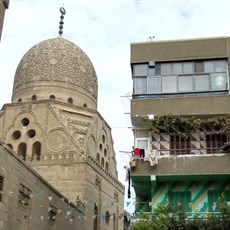
Qaitbey mosque
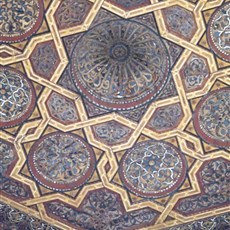
Qaitbey mosque
Then strolled through the “City of the Dead” where, since Ottoman times, people have been buried in mausoleums containing rooms where family members could have a picnic or spend the night remembering their dead. Since the 14th century the homeless have made use of these rooms and nowadays the area boasts running water, electricity, a post office and police station. Strange to see people at work and play in a cemetery!
Thence back to Khan al-Khalili for lunch and some final shopping. We bought delicious ta’ammiya from a busy stall and ate it at a nearby teashop where we had to sit under scaffolding, on a rubbish-strewn pavement where swarms of flies were regularly disturbed by passing feet and where a cat came to crap! And yet we enjoyed our lunch and tea thoroughly. Yum!
A little later we saw a woman sitting in front of a board of flat breads which she had perched on an upside bucket. And on which a male cat was spraying! Now, had it been day one of our trip we would undoubtedly have eaten considerably less bread!
Done with the Khan we wanted tea – at LE3 each. We had a discussion with the most populated tea shop man who said LE6. We said LE3. He said LE6. We said the going rate for tea is LE3. He said this is a tourist area and here you will not get tea at under LE6. Charl told the tout at the considerably emptier tea shop next door we were looking for LE3 tea and he said “take a seat”. So there!
And “home” (where we had been allowed to store our luggage for the day and promised a final shower at no extra cost) for Egyptian pancakes and one more baklava purchase (we ate this later on the plane and on a long delay in Kenya) and that promised shower. And to chat in the TV room to Christene, an American from Chicago of Korean origin travelling alone through Africa; Buddy from the Philippines who often visits and loves South Africa and our wines (his business card reads: Special Advisor to the Party President); an Englishman writing a book on the British occupation of Egypt.
Aside: On this trip I underwent a sea change with regards to Muslim men – about whom I had developed a real prejudice while travelling alone in the 80s. The Egyptians are definitely less aggressive than other Arabs, but I would not like, even at my age and weight to travel alone again in a Muslim country. However, travelling with Charl I encountered the best of the Egyptians – warm-hearted, patriotic, helpful and generous.
And so to the airport…and after many delays, back home.
After a truly memorable and worthwhile trip!
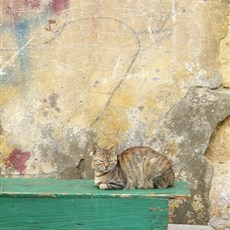
City of the Dead
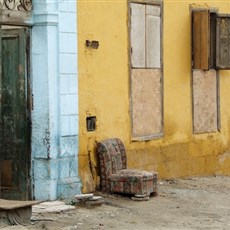
City of the Dead
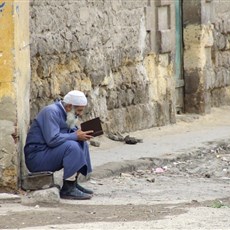
City of the Dead